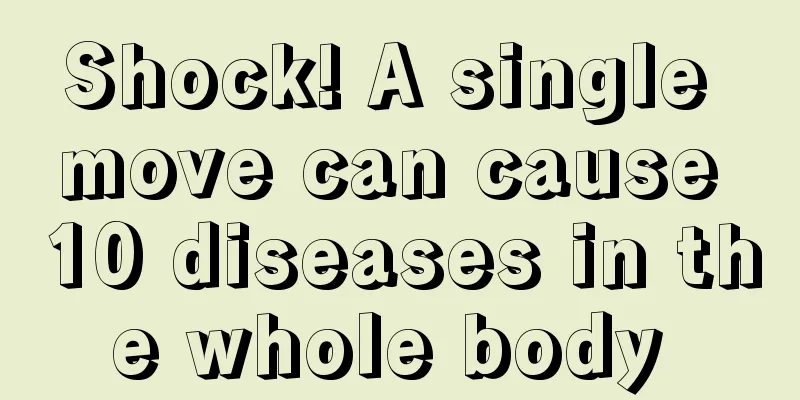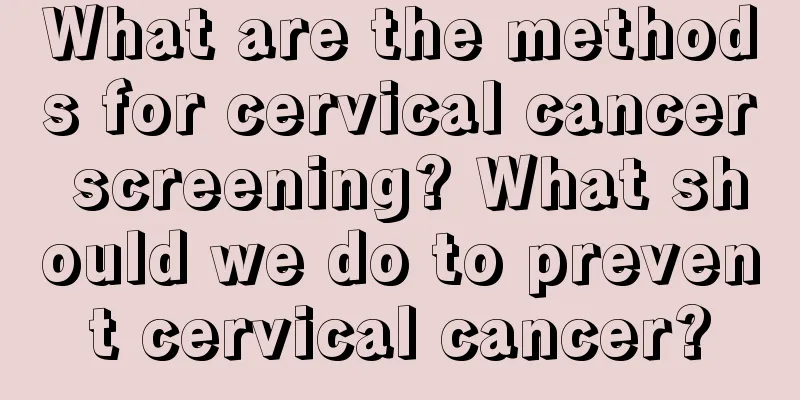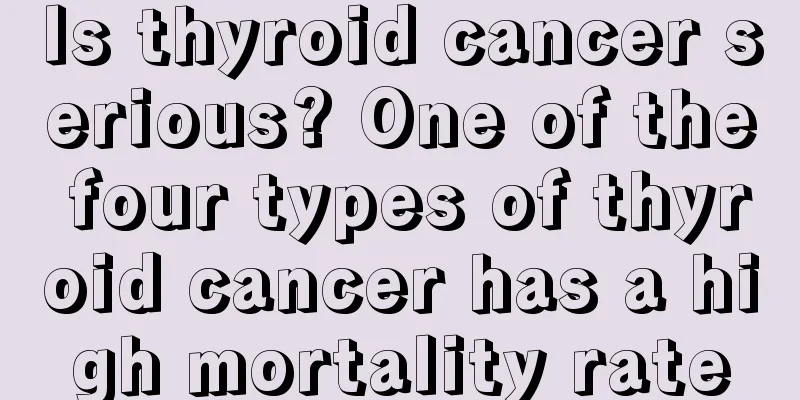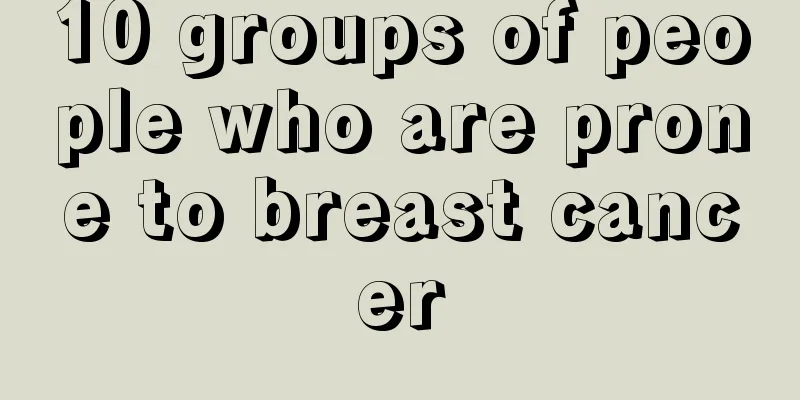Shock! A single move can cause 10 diseases in the whole body

|
With the increase of social competition and work pressure, women are more likely to suffer from cervical spondylosis. But in addition to stiff neck and numb fingers, vascular disease, breast pain in women, dizziness, etc. may be symptoms of cervical spondylosis. 1. Cervical cerebrovascular disease Among the nearly 1 million cerebrovascular patients in the country every year, 26% are caused by cervical spondylosis. This is due to compression of the vertebral basilar artery, which causes insufficient blood supply to the brain. If this state is maintained for a long time, dizziness, numbness of the hands and feet, unstable gait, and even cerebral thrombosis and cerebral infarction may occur. Some patients may suffer from hemiplegia as a result. If cervical spondylosis is treated promptly, it will not deteriorate into serious consequences such as stroke and hemiplegia. 2. Cervicogenic breast pain It is more common in middle-aged and elderly female patients with cervical spondylosis. They initially feel pain in one breast or pectoralis major muscle, intermittent dull pain or paroxysmal stabbing pain, which is most obvious when turning the head to one side. Sometimes the pain is unbearable. This pain is misdiagnosed as angina or pleurisy. This is caused by bone hyperplasia compressing the nerves of the 6th and 7th cervical vertebrae. 3. Cervicogenic vertigo Some people suffer from "high blood pressure" for a long time and cannot be cured, and the final examination shows that they have cervical spondylosis. Cervical spondylosis can cause increased or decreased blood pressure, but increased blood pressure is more common. This type of patients often have symptoms of cervical spondylosis such as neck pain, tightness, and upper limb numbness. Generally, treatment for hypertension is not effective, but when the symptoms of cervical spondylosis are under control, blood pressure will drop accordingly. This is related to the abnormal blood supply to the vertebral basilar artery caused by cervical spondylosis and the functional disorder of the sympathetic nerves caused by stimulation. Since cervical spondylosis and hypertension are both common in middle-aged and elderly people, there is a high chance of the two co-existing. 4. Cervicogenic mental disorder Some patients with cervical spondylosis first show symptoms of visual impairment, such as decreased vision, intermittent blurred vision, swelling and pain in one or both eyes, photophobia, streaming waves, unequal pupils, and even narrowed visual field and decreased vision. Its characteristic is that the eye symptoms are obviously related to the changes in neck posture, and some are accompanied by symptoms of cervical spondylosis. Many patients experience visual impairment when the head and neck are in a certain bad posture for a long time. This visual impairment is related to ischemic lesions in the visual center of the occipital lobe of the brain caused by autonomic dysfunction and insufficient blood supply to the vertebral basilar artery due to cervical spondylosis. 5. Cervicogenic angina Some people suffer from "angina pectoris" and general drug treatment is ineffective. They should consider whether it is cervicogenic angina pectoris caused by cervical spondylosis. This is because the cervical nerve roots that control the diaphragm and pericardium are stimulated and compressed by the cervical vertebrae, or because the cardiac sympathetic nerves are stimulated. Patients may experience precordial pain, chest tightness, premature beats and other arrhythmias and electrocardiogram ST segment changes, which can easily be mistaken for coronary heart disease. Pressing the tender area near the cervical spine can induce pain. The symptoms may be aggravated when the head is in a certain position and posture, and will be alleviated after changing the position. Treatment of cervical spondylosis can achieve obvious results. 6. Cervicogenic dysphagia Some patients begin to feel itchy throat and a foreign body sensation, and then have difficulty swallowing. The symptoms are intermittent, sometimes mild and sometimes severe. A few people experience nausea, vomiting, hoarseness, dry cough, and chest tightness. Many patients were suspected of having esophageal cancer, but their gastroscopy results were normal. An X-ray examination of the cervical spine showed cervical spondylosis, and on the lateral X-ray of the cervical spine, degenerative changes such as osteophytes protruding forward were visible. This is due to the rapid growth of bone at the front edge of the cervical vertebrae, which directly compresses the posterior wall of the esophagus and causes esophageal stenosis, or the symptom of autonomic dysfunction caused by cervical spondylosis leads to esophageal spasm or excessive relaxation. It may also be caused by irritation of the soft tissue around the esophagus due to the formation of bone spurs. 7. Cervicogenic gastropathy When the sympathetic nerves in the neck are stimulated by cervical bone spurs, degenerated intervertebral discs, and narrowed intervertebral spaces, the signals enter the sympathetic network in the cranium and are transmitted to the autonomic nerve center in the hypothalamus. They are then transmitted to the internal organs along the sympathetic or parasympathetic nerves, causing two phenomena in the stomach. When the sympathetic nerves are excited, gastrointestinal secretion and motility are inhibited, and symptoms such as dry mouth, anorexia, abdominal distension, belching, upper abdominal pain, nausea and vomiting appear; when the excitability of the parasympathetic nerves increases, it can cause increased appetite, acid reflux, belching, pain when hungry, and relief after eating, and other symptoms similar to peptic ulcers. After the cervical spondylosis was cured, the stomach symptoms disappeared. 8. Cervicogenic cataplexy People often fall suddenly when standing or walking due to a sudden turn of the head, which causes the body to push and support them. After falling, they can quickly wake up and stand up due to the change in neck position. They have no impaired consciousness and no sequelae. Such patients may experience symptoms of autonomic dysfunction such as dizziness, headache, nausea, vomiting, and sweating. This is because the hypertrophic bone of the cervical vertebra compresses the vertebral artery pulse, causing obstruction of the basilar artery blood supply, resulting in a temporary severe lack of blood supply to the brain. 9. Cervicogenic tic syndrome It is more common in children and adolescents, mainly because they lie down for a long time, tilt their head, or read and write with their head tilted, which can easily lead to cervical spondylosis, resulting in the head tilting to one side, frequent twitching, etc. If you change bad habits and actively receive treatment, the tics will stop quickly and you will gradually recover. 10. Cervicogenic paralysis of lower limbs or defecation disorder Paralysis of the lower limbs or defecation disorders are caused by stimulation of the lateral vertebral bundle of the spinal cord. Patients experience numbness, pain, and limp in their upper limbs, and most neck symptoms are mild and easily masked. Some are accompanied by frequent urination, urgency, incomplete urination or incontinence. It can be seen from this that when some patients often experience headaches, toothaches, trigeminal neuralgia, dizziness, nausea, vomiting, insomnia, irritability or depression, visual and hearing impairment, abnormal taste, smell and skin sensation, angina pectoris and other symptoms and long-term treatment is ineffective, it is advisable to check the cervical spine. Do not treat the headache by treating the head and the foot by treating the foot, because the lesion is likely to be in the cervical spine.
|
<<: Symptoms of renal hypertension
Recommend
Are meridians blood vessels?
As we all know, there are a lot of meridians dist...
Can ct detect brain cancer
Intracranial malignant tumors include gliomas, me...
When is the best time to run?
We know that for office workers, various work pre...
Breast cancer staging, grading and recurrence
Breast cancer staging and recurrence: The breast ...
Methods for correcting o-shaped legs
O-shaped legs are deformities in which the inner ...
How to relieve pain in late stage cervical cancer
1. Causes of pain in cervical cancer The causes o...
What's wrong with stomachache and low-grade fever
Symptoms of abdominal pain and low-grade fever ar...
Stomach pain accompanied by nausea
Stomach pain is a very common symptom. When it oc...
How to remove blood stains from clothes
Blood stains are something that we often see on o...
The main factors leading to liver cancer
Understanding liver cancer should start with the ...
How long can you live with early ovarian cancer
How long can patients with early-stage ovarian ca...
What to do if your fingers crack in winter?
I believe many friends have tried this and found ...
What does urine acidity and alkalinity indicate?
I believe everyone has gone to the hospital for a...
What's wrong with the swelling of my left foot
The foot is a relatively important organ in our h...
Can a person with thyroid cancer live to 80?
Can a person with thyroid cancer live to 80? 1. W...









